Riders keep going faster and harder, which means the suspension has to keep getting better and better to provide the control and traction top enduro racers need. And as good as their new forks and dampers are, Fox flipped their thinking to see if they could make a single crown fork that performed like a dual crown.
Turns out, they can. The all-new Fox Podium Fork is an inverted single crown fork, and it’s for enduro bikes.
Why inverted?
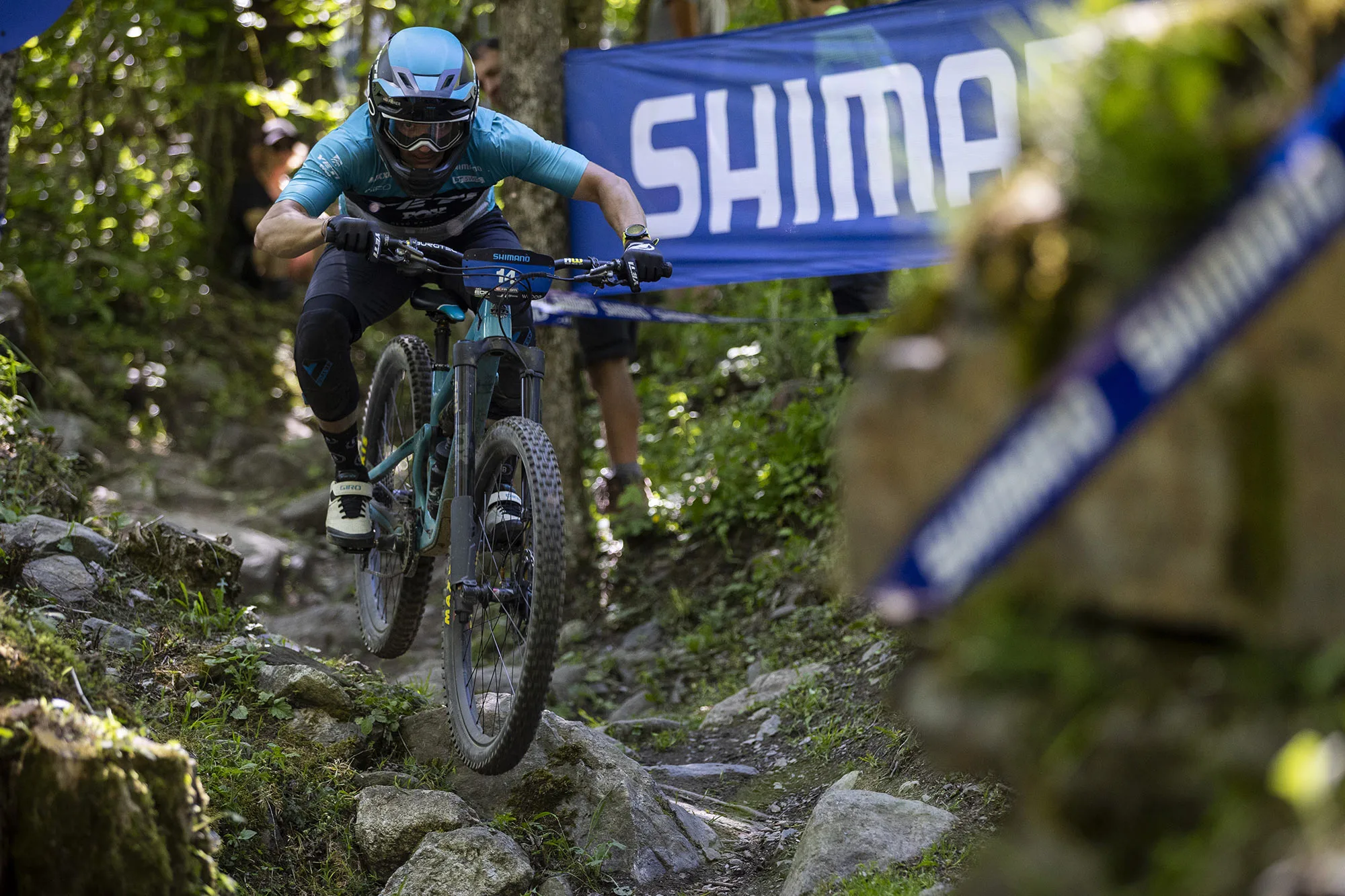
Fox has three parameters they focus on: Control, Comfort, and Traction.
With inverted, it gave them new ways to explore this balance.
The project didn’t start out with the idea of making an inverted fork. The starting goals were reducing friction and letting riders push as hard as they possibly can, with more confidence. Someone suggested that an inverted design had the potential to dramatically reduce friction, especially when loaded.
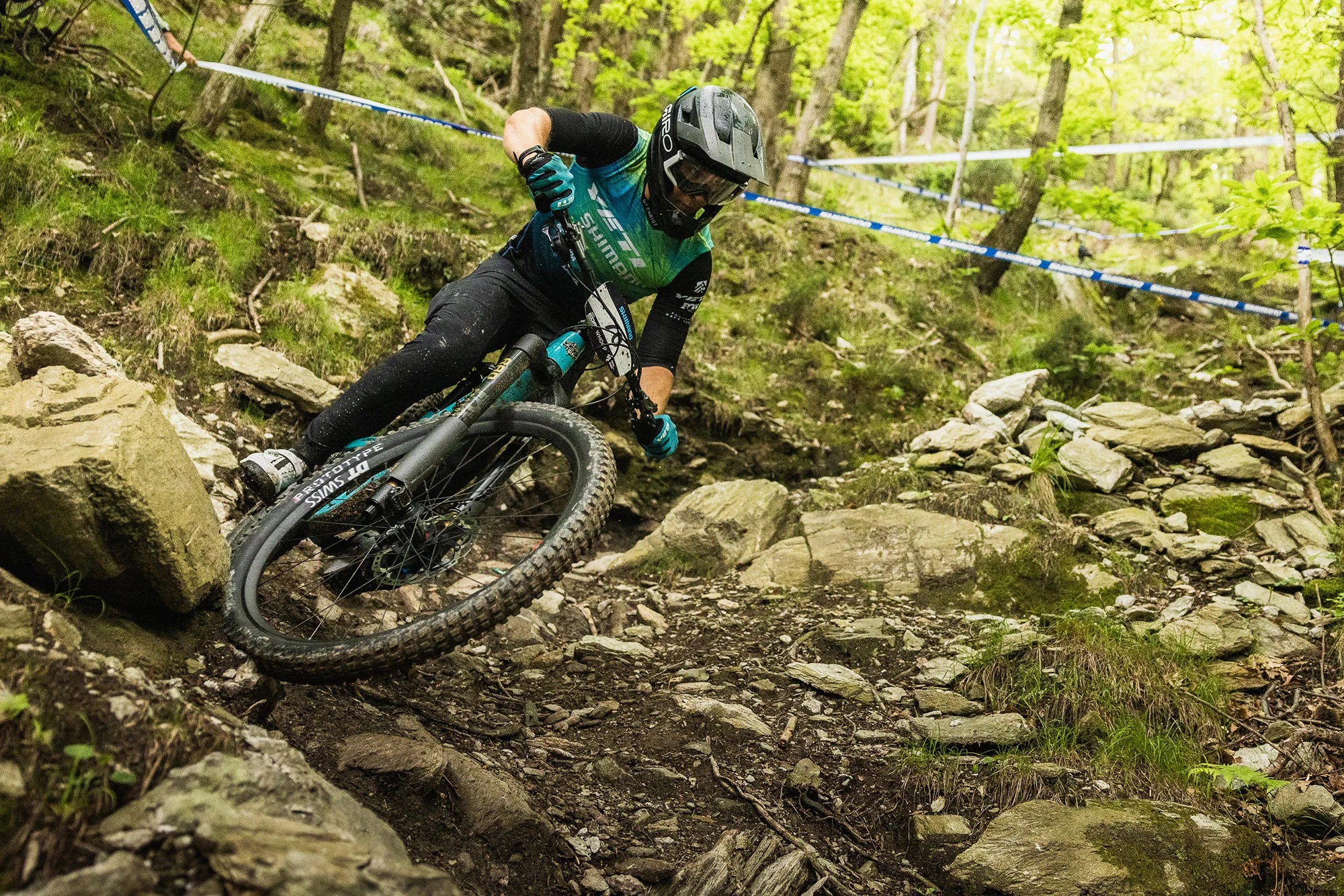
So, they tested a prototype on their two-axis testing rig, and the data proved the concept.
Then they made prototypes. They were heavy and big, but once a tester got a hold of it, they wouldn’t give it back.
And that’s when they knew they were on to something. The project got the green light.
Weight vs. Friction

Some riders and products will give up a little bit of performance to save weight. But more and more, many riders are willing to add a few grams to get better performance. From high-pivot bikes with idler pulleys to tire inserts, if it means finishing a race or ride with no problems, or hitting sections harder and faster, going full weight weenie isn’t as cool as it used to be.
So, Fox focused on performance, and particularly on reducing friction.
If you think that means making the fork super rigid and stiff, you’re partly right.
Stiff, but not too Stiff
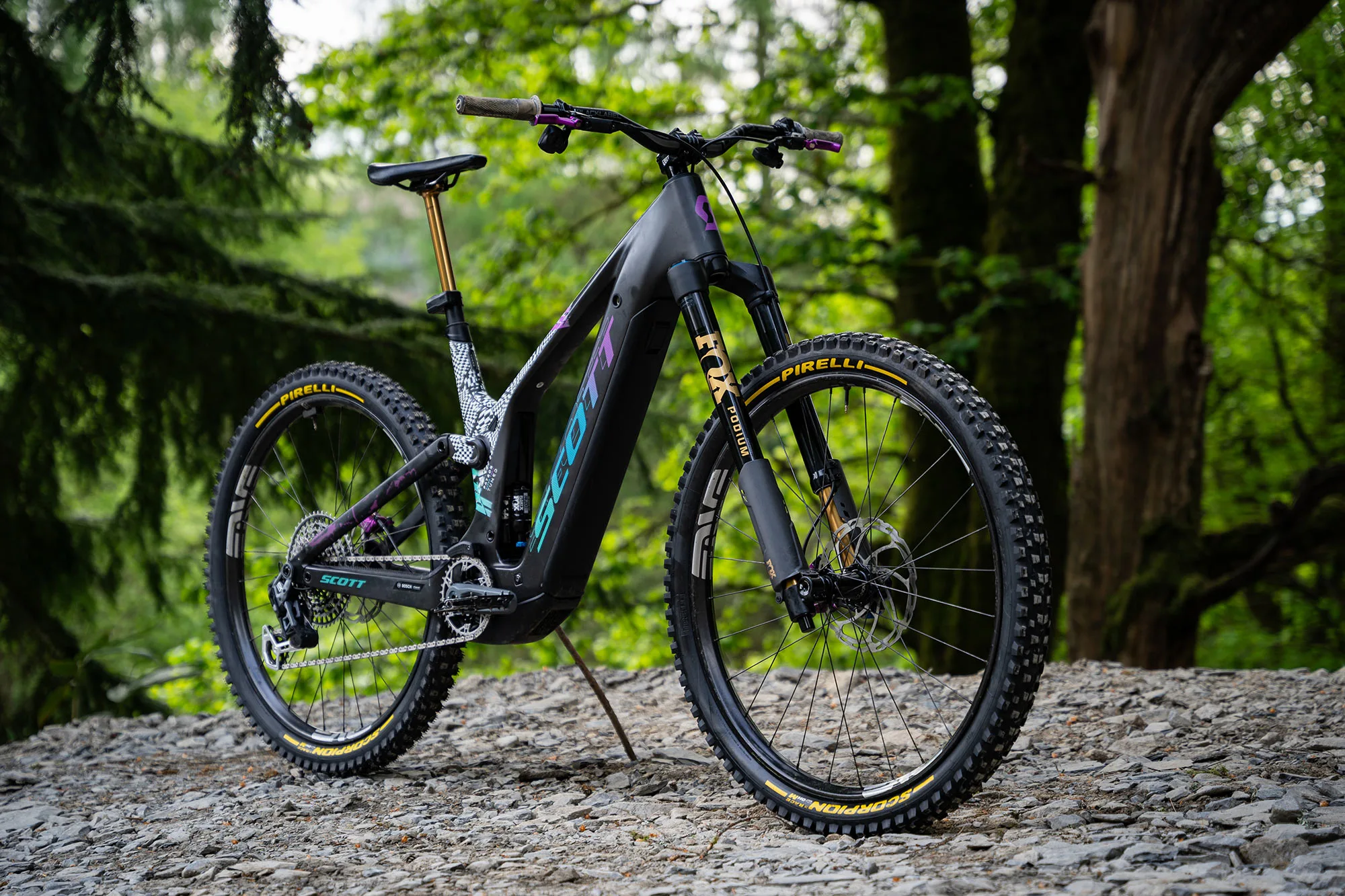
Fore-aft, the fork is very rigid. Because if you reduce friction from binding and bending forces creating friction on the stanchions, then you can then make the dampers better.
Why? Because friction is, in essence, a form of damping in that it slows down fork movement. The problem with friction is that you can’t control it like you can with a damper.
But torsionally, they left a bit of wiggle room. Yes, the crown and beefy 47mm upper tubes prevent the fork from twisting or leaning during hard cornering, but those aren’t the only spots that control steering response…and that’s where the axle comes in.

A 15mm axle was not torsionally stiff enough, even a completely solid one. So the Podium uses a 20×110 Boost thru axle.
They tested a lot of axles, starting with three different alloy versions. All of the riders picked the stiffest one, so Fox figured it was worth testing something stiffer.
Eventually, they switched to steel, and kept making them stiffer until the riders said too much. They backed off a bit and landed at the sweet spot that gave the fork a magical ride quality.
Bushing Placement
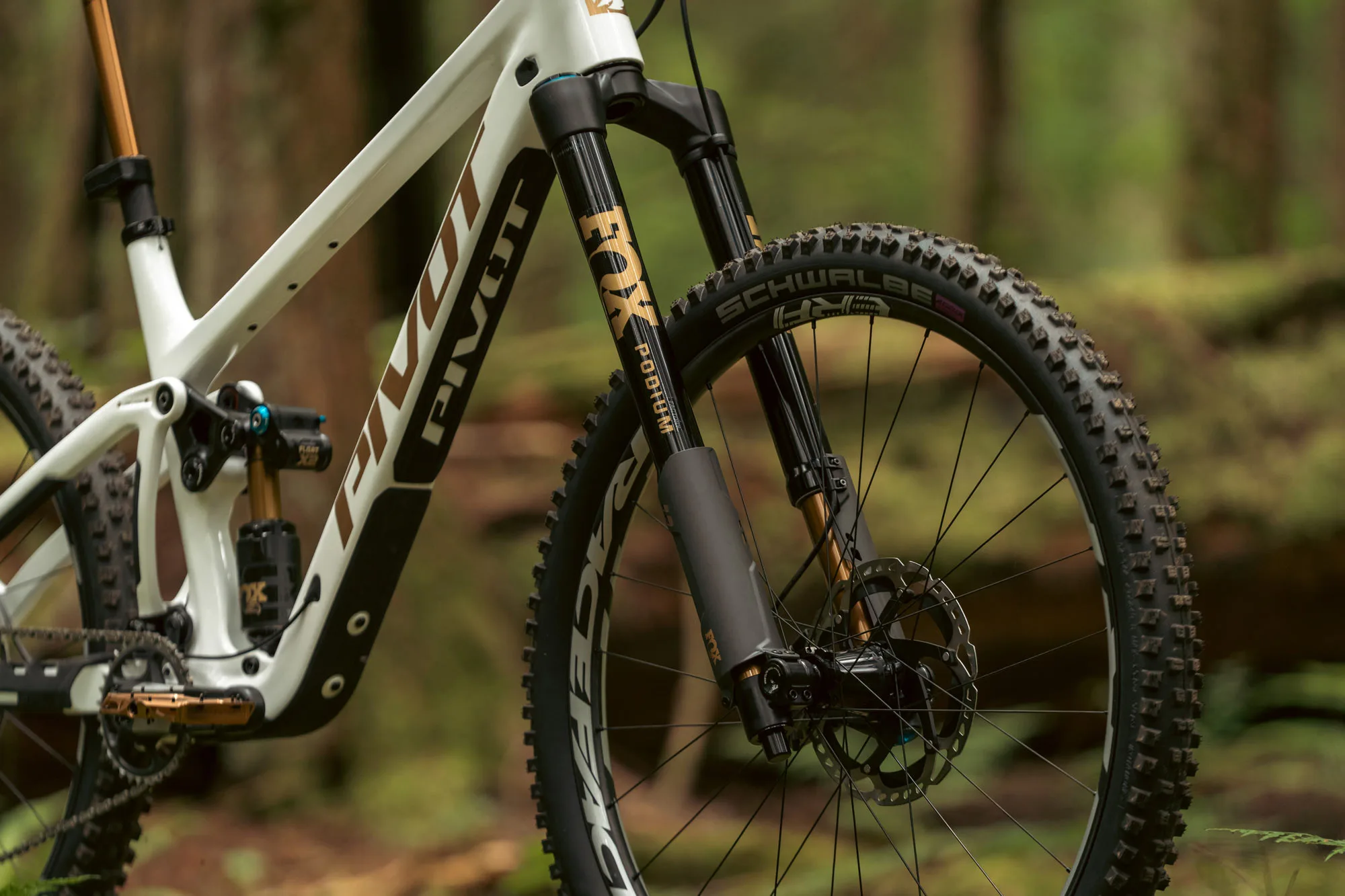
To reduce friction, the stiffness helps, but they also looked at bushing overlap, bushing placement, and the oils they used for lubrication.
They were already happy with their bushing size, but, compared to a typical fork, like the 38, there were opportunities for bushing placement to be better.
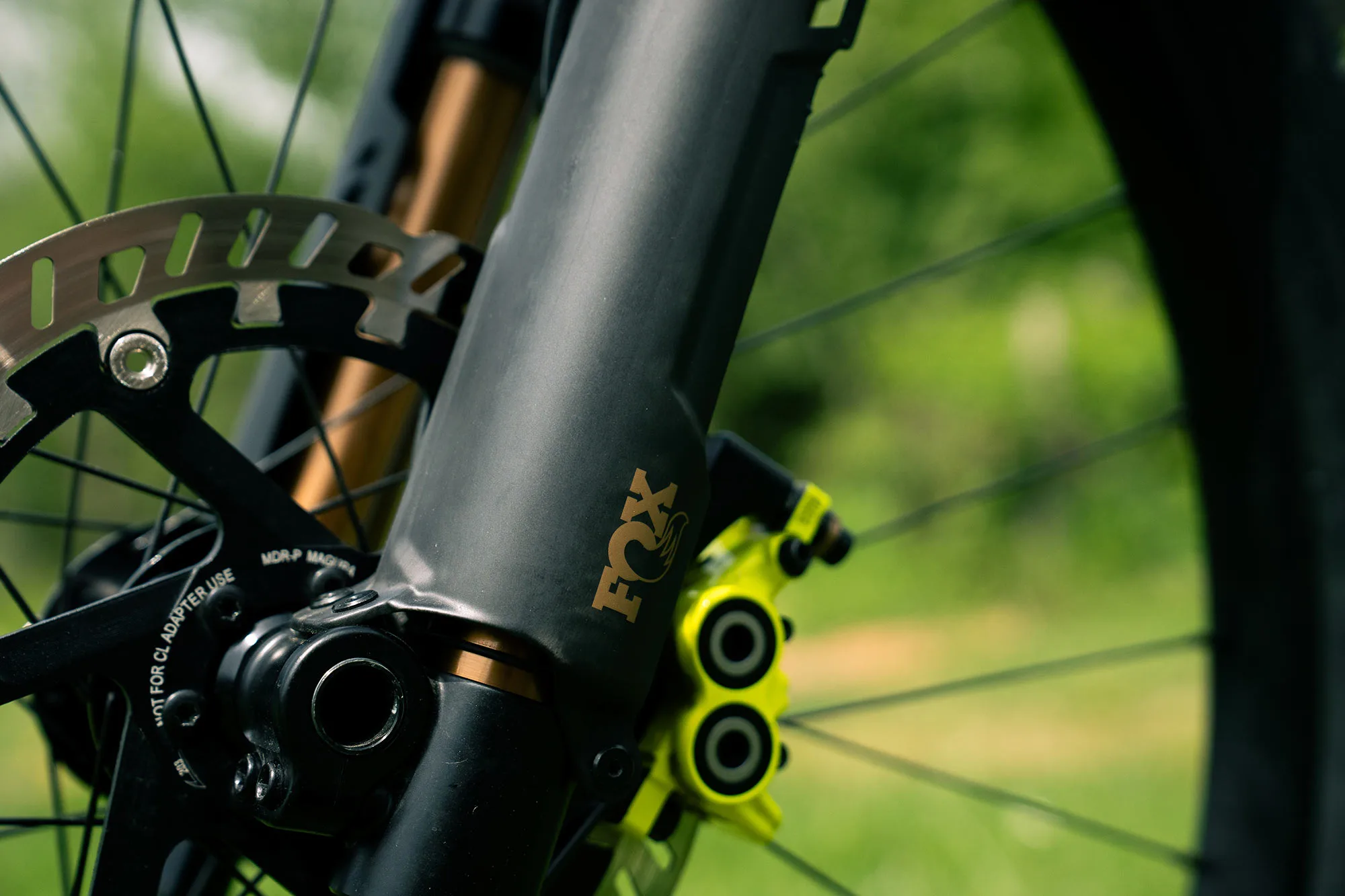
The dropout is designed to get the axle as close as possible to the stanchion, making it as close as possible to the lower bushing sitting at the bottom of the uppers.

Then, they moved the upper bushing further up, increasing the distance from 120mm to 174mm, a 32% increase over a 38, and 7% more than a 200mm-travel Fox 40 DH fork. The further apart the bushings are, the better they brace the stanchions, but the inverted design offered another surprise advantage…

On a traditional fork, the distance from the axle to the first bushing never changes, so the load on the lower bushing remains the same.
But on an inverted fork, as the axle gets closer to the lower bushing during compression, the leverage forces it has on that bushing decrease, so it actually gets smoother as you go deeper into the travel.

So much so that they had to redesign the damping on the X2 high speed compression circuit for this fork.
The Podium has a Grip X2 damper, but with enhanced in compression and rebound damping tuned specifically for this fork.
BTW, the upper bushing is fixed inside the chassis, so it’s not a “trombone” bushing that slides with the stanchion. While a sliding design would have increase bushing overlap distance as the fork compressed, Fox says the benefits weren’t enough to justify the added complexity of design, and it would have required thicker walled tubes, so it adds weight. The real driver to improved performance was making the distance from the axle to the lower bushing as short as possible.
Weight, Oil, Air Springs, etc.

Weight was not the top priority, but it wasn’t ignored. Taking what they learned from the generative design of last year’s new 32 SC, they used that process to optimize the crown for both weight and stiffness.
The Fox 38 is lighter, with basically the same axle to crown height, but the Podium is stiffer and smoother. And because the Podium is inverted, there’s less unsprung mass than the 38, so it can react to (and recover from) bumps more quickly.
The inverted design means the seals between uppers and stanchions are constantly bathed in oil, because gravity. This means better seal lubrication for smoother performance. Angled grooves in the upper bushing let oil pass through to keep the lubricating fluid circulating throughout the chassis.

The Podium uses Fox’s latest GlideCore air spring, which debuted on the new 36 forks earlier this year. The design uses flexible dampers between the air spring shaft’s bushings and body, letting the shaft flex along with the fork rather than bind, keeping it moving smoothly no matter how hard you push it.
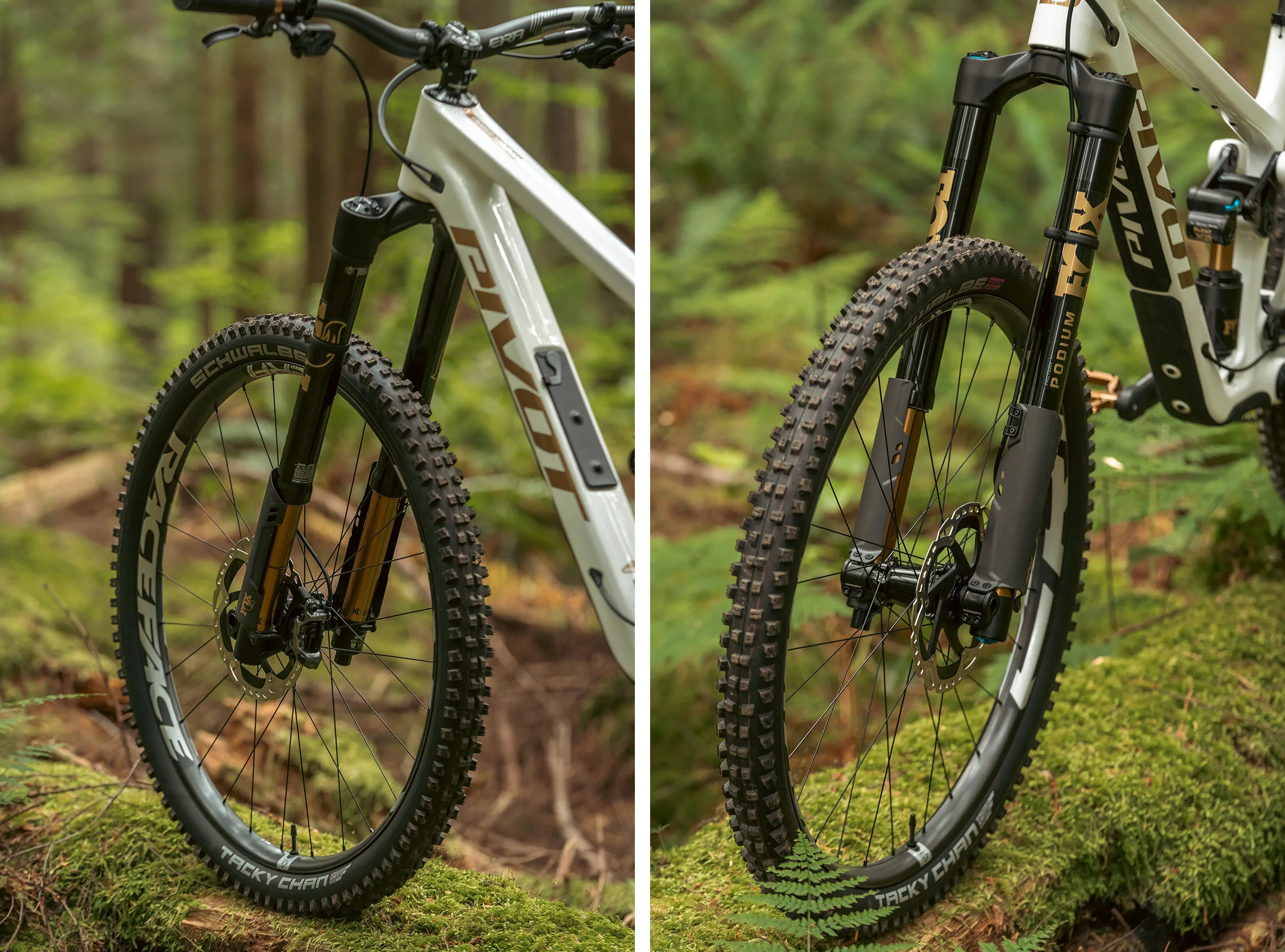
The air spring is filled from the bottom, but there’s a tube that goes up inside the air spring so that when you fill it, the air enters the chamber above the lubricating oil, thus preventing any from backfilling into the tube and into your shock pump. Bleeders on the top caps let you depressurize it to compensate for altitude and temperature changes.
Fox says the Podium has a similar service interval as their regular forks, and they say it’s even easier to work on because you can drop just one side at a time.
Fox Podium Models, Pricing & Specs
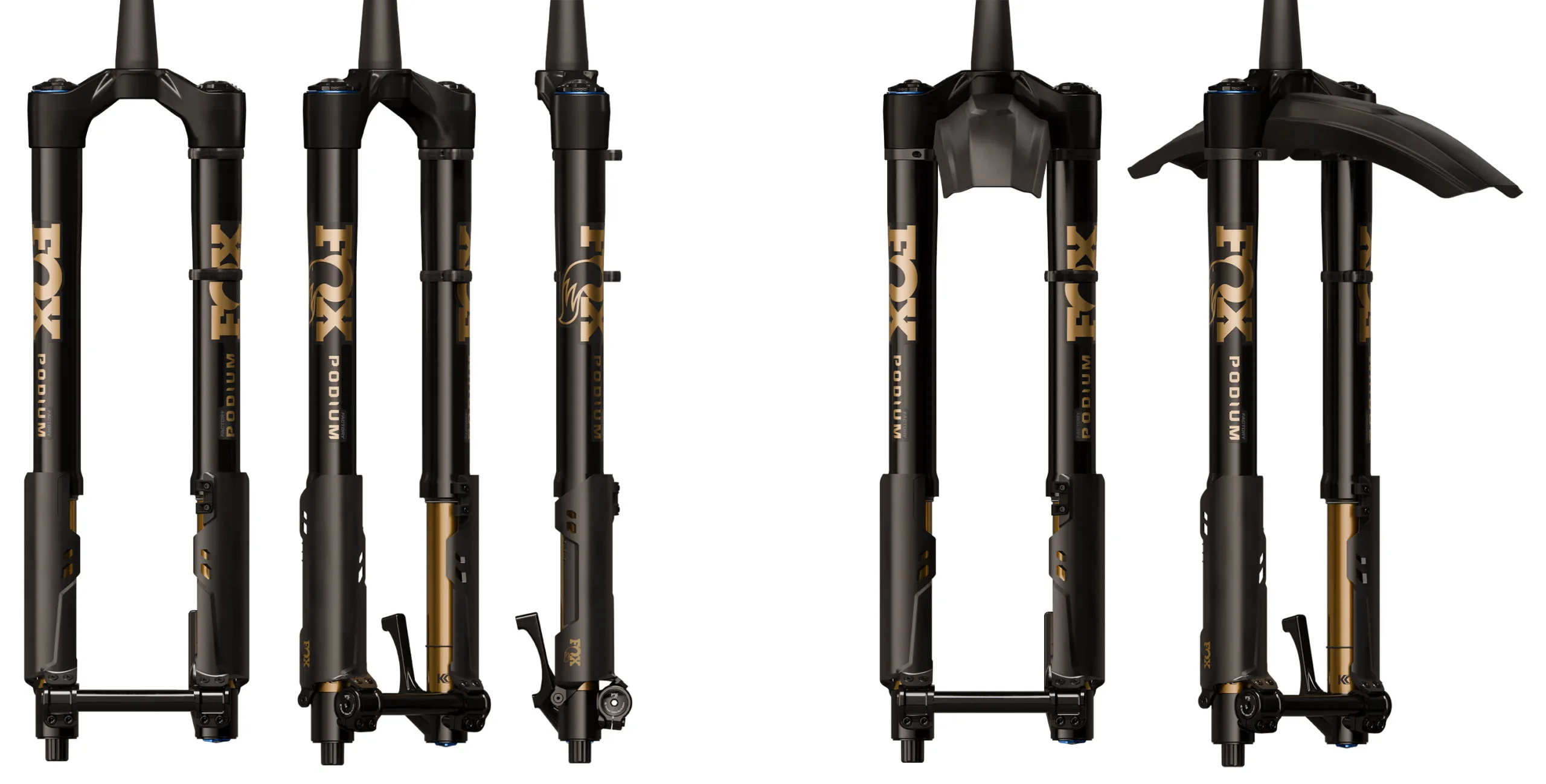
The Podium comes in two versions:
- Factory – carbon stanchion guards, Kashima-coated stanchions
- Performance Elite – plastic injection molded guards, black anodized stanchions
The Performance Elite model is only for OEM spec. For aftermarket, only the Factory version is available at retail – here are the key specs:
- CROWN DIAMETER: 58mm and 68mm Options
- WHEEL SIZE: 29in
- TRAVEL: 170mm and 160mm Options
- UPPER LEGS: 47mm diameter
- STANCHIONS: 36mm diameter
- DAMPER: GRIP X2
- DAMPER CONTROLS: HSC – LSC – HSR – LSR
- AXLE: 20 x 110mm Boost
- RAKE: 44mm
- STEERER: 1.5 Tapered
- LOWER TUBE FINISH: Kashima
- BYPASS CHANNELS: No (unnecessary due to inverted design)
- BLEEDERS: Yes
- FLOATING AXLE: Yes
- ROTOR SIZE: 200mm direct Post Mount, 230mm max
- MUD GUARD MOUNT: FOX Mud Guard available Fall 2025
- AIR SPRING: FLOAT EVOL GlideCore
- STARTING WEIGHT: 2695g
Both versions have entirely anodized finishes…there’s no paint, which helps save a bit of weight. And they’re working on a crown-mounted fender. Podium MSRP: $1999.99 USD / $2679.00 CAD / 2.399,00 € EUR / $3349 AUD
Downhill version? Cross country?

Fox developed the Podium for enduro racers and hardcore all-mountain riders. At the moment, they mentioned no plan to make a longer travel versions for downhill racing…but they’re always working on stuff. What about taking this design down to XC?
“I can’t confirm or deny future product designs that Fox is working on,” says Bill Brown, VP of engineering for mountain bike products. “But we’d have a hard time getting the weight low enough to appeal to the XC crowd”
Why not go to 180mm? Because none of their pro racers were using anything above 170mm travel, so they stopped there to keep it as light as possible.
